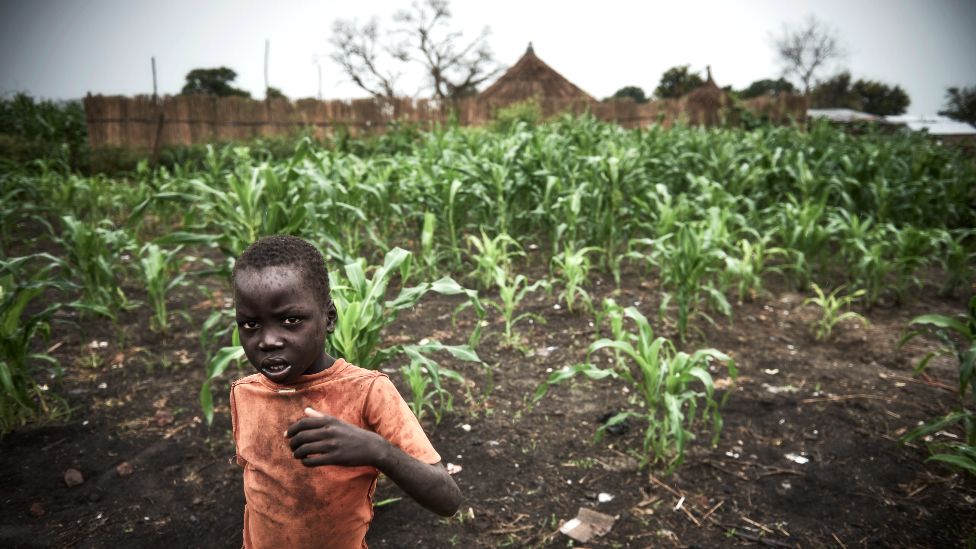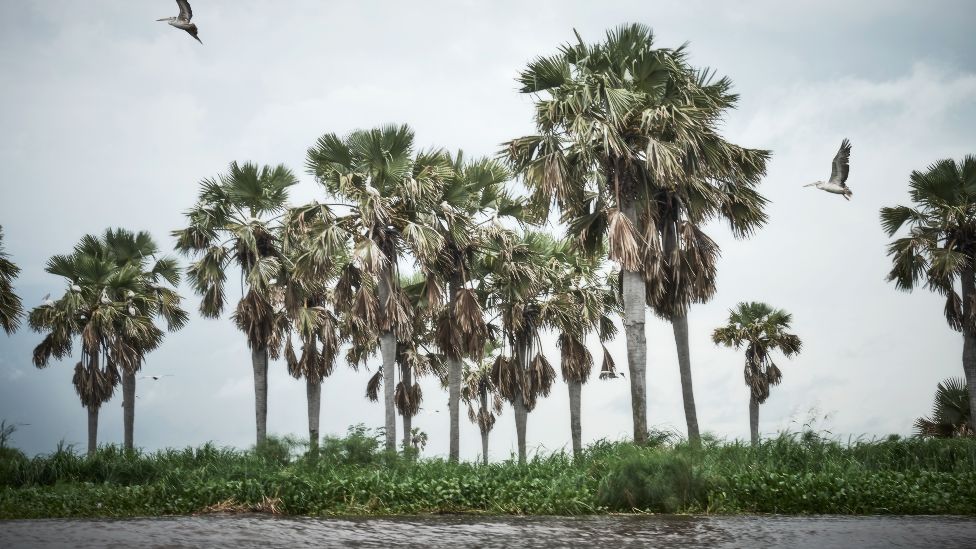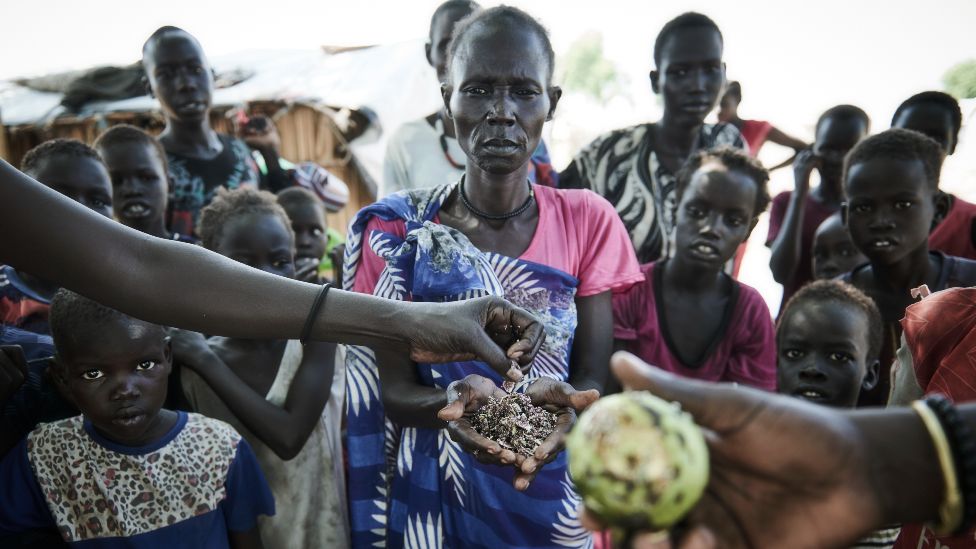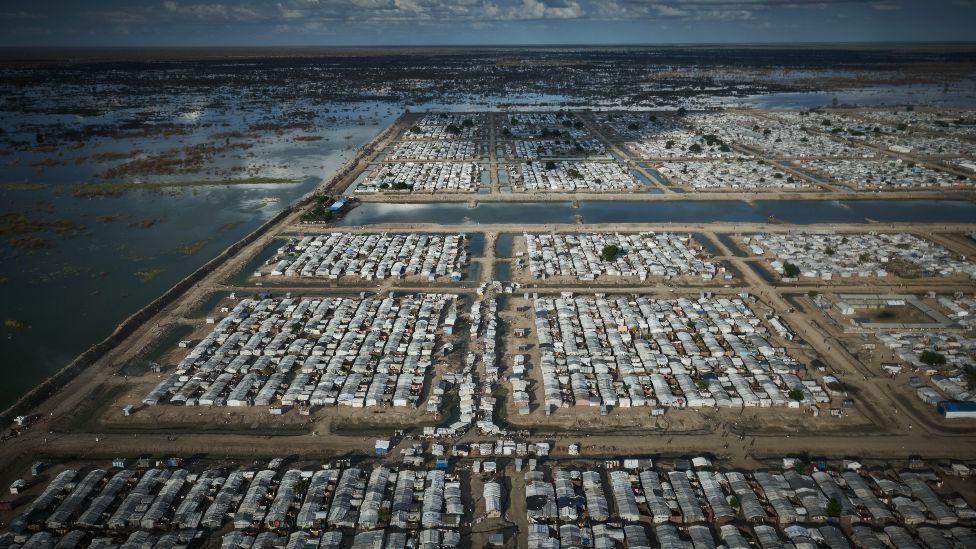South Sudan floods: Fleeing Nile waters to a minefield
When the worst flooding in more than 50 years engulfed communities along the River Nile in South Sudan last year, thousands of people fled to higher ground, seeking refuge in an old army barracks.

Known as Canal Village, it had been a strategic military position decades ago in northern Jonglei state, with the city of Malakal further along the Nile. But its new residents discovered, to their dismay, that within its confines lay an old minefield.

Their predicament encapsulates the impact of a climate crisis on a country which is yet to recover from a brutal five-year civil war. A peace deal signed in 2018 has done little to stop endemic violence.

Those who had already been forced from their homes because of the conflict are again fleeing, with flooding, seen above near the town of Bentiu in Unity state, over the last four years becoming an increasing problem.
It is estimated that 2.2 million people, nearly 20% of the population, are internally displaced – with the UN warning that up to 10 million will need food aid in 2023.

In order to help her family escape the waters that engulfed her village, Mary Nyantey (pictured above) tied her five children up in sheets of plastic usually used to cover homes from the rain. She swam and floated down river for a day dragging her precious sack behind her until she reached Bentiu.
The family are now in a camp there, but have no food and go to the river to harvest a plant called “yell”, which is what they are eating to survive.

The camp in Bentiu shelters more than 112,000 people and is erected on raised dykes. According to Joshua Kanyara, from the UN’s International Organization for Migration (IOM), the area is unique in that any dry land there, is thanks to these dykes, which are about 2.5m (8ft 2in) high and built by humanitarian groups.



